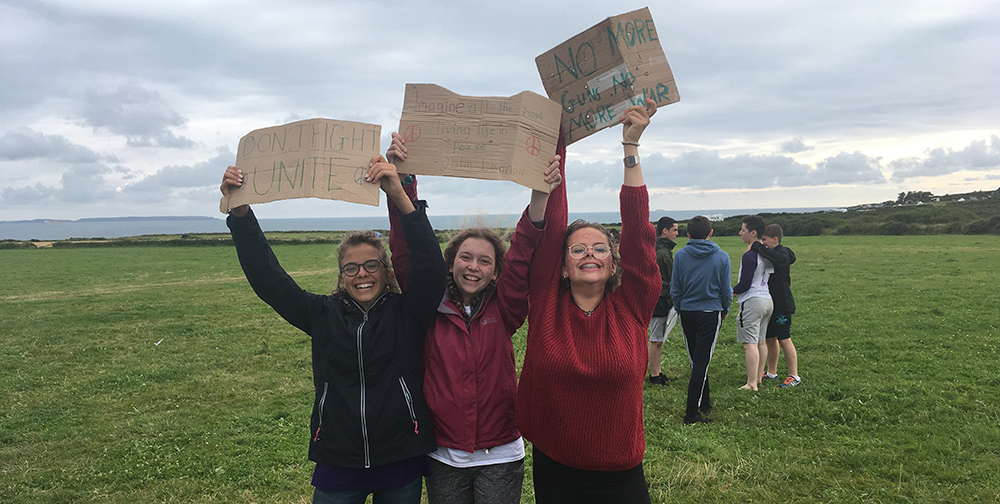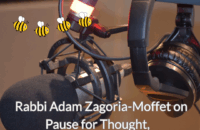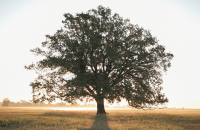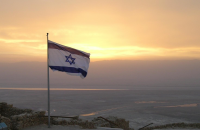The Jewish Memories Behind a New Refugee Youth Movement

I see Judaism as a community of memory. The annual cycle of Torah readings commit a certain narrative of creation, belonging, exile and redemption to memory. In turn, the practices within our festivals – whether it is sitting in the sukkah, lighting the Chanukah candles or participating in the Passover Seder – are carefully crafted as a reminder of those stories. And memories also make our individual practices unique: my family, for example, doesn’t use red wine for Kiddush because of the blood libel.
It is for this reason that the Jewish community responded so viscerally to the European refugee crisis that first caught our collective attention in 2015. The sound bite we kept hearing was that this was “the worst migrant crisis since the Second World War”, sparking the muscle memory within our community of our own refugee story. Projects from Help Refugees and Safe Passage to The Bike Project are sprinkled with the yiddishkeit of those whose ancestors fled genocide in Europe less than a century ago.
My family’s story, the one that had been passed down to me, is perhaps a little different. My grandfather, Rabbi Dr Solomon Schonfeld, was involved heavily in the relief effort. As the chair of the Chief Rabbi’s Religious Emergency Council, which he established, my grandfather saved the lives of approximately 3,500 people. They were refugees from the Nazis, who were fleeing Europe before, during and after the Holocaust. Rabbi Schonfeld took extraordinary steps to save lives, travelling into post-war Europe to retrieve people, thinking outside of the box and bending many rules in order to get people safe haven in the UK. He built communities and schools, including the Hasmonean, to accommodate those who he brought over. Many Masorti members are alive because of his heroism.
Although I never got to meet my grandfather (he died in 1984), my father worked hard to ensure that the memories of his father’s lifesaving actions are preserved. We are born 80 years and 1 day apart, and I seem to have inherited his beard-growing genes. While my grandfather brought his unshakeable determination and unending work ethic to a refugee crisis 75 years ago, what skills could I bring to respond to this new crisis? My mind immediately went to Noam, the youth movement that I’d been part of for a decade and that had made me who I am.
The youth movement experience is also imbued with memories: you play certain games and sing certain songs; you sing particular melodies while davening; and the rhythm of both planned activities and unplanned shenanigans is engrained so deeply as to resemble near-religious custom. The effect of this is that each summer camp forms a loyal community with a level of ownership that comes from knowing that you could lead a song or teach a game that would launch its own lasting custom within the movement.
The building of these communities on the summer camps creates the space for deep and lasting friendships, shaped through shared experiences, values and practices. And individuals find themselves developing as a result of these experiences. Both leaders and participants are stretched out of their comfort zones and developed educationally, socially, physically and emotionally.
So the question arose: is it possible to take the youth movement model and apply it to refugees and asylum seekers?
To begin with, there was certainly a willing supply of volunteers. I had 50 responses to an initial request on Facebook, from which I put together a crack team of six, many of whom were former Noam movement workers like me. We had a particularly inspiring meeting with Rabbi Jonathan. We attracted 100 people to our launch event, and are currently recruiting a team of experienced and engaged leaders. We also discovered the demand for our project through meetings with refugee organisations and local authorities, as well as focus groups with refugees at local youth clubs.
Most importantly, however, we unearthed a clear thread between Jewish youth during the birth of the movements and the refugee communities today. Newly arrived in the UK, Jews in the early 20th century were torn between identities – now encompassed in the question of ‘British Jew’ or ‘Jewish Brit’, which has remained a youth movement staple to this day – and the youth movement provided them with a space to mediate those identities. The youth movement was also an incubator for the values and ideals that shaped young people in their adolescence, and made it possible to map those values onto the Jewish state as it formed.
Refugees and asylum seekers are also seeking to mediate their identities between where they came from and their new home, and are looking for the tools to shape and, perhaps one day, reshape the state they are attached to. Also, in a society that seems to lack ways for young refugees to exercise their independence, they are able to develop the confidence and skills that have made the Jewish youth movements a conveyor belt for leaders.
Our Second Home, as the project is now known, seeks to create just that. A home-away-from-home and a nurturing place that, through residentials, will put refugees, their self-development and the building of their communities, networks, and leadership skills, at the forefront. And of course, we will build powerful, new memories, and have a really good time doing it.
You can find out more about OSH and lend your support at www.oursecondhome.org.uk.
Amos Schonfield is the Founder of Our Second Home, and a former Mazkir (5776) of Noam




